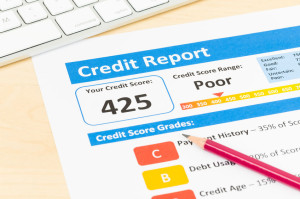When it comes to putting a home on the market, are you ready to put your best foot forward? Many homeowners think they have to spend a fortune to make their properties more inviting to home buyers. Not true! In fact, two of the most important things you can do before you list your home don’t cost much at all.

The No. 1 pre-selling task? De-cluttering. Getting rid of the clutter is so important because home buyers are turned off by it. Broken toys, piles of magazines, books and mail, lots of knick-knacks and crowded countertops — they all detract from the ability of a buyer to envision themselves in your home. And don’t neglect the areas behind closed doors! Go through your closets and shelves. Home buyers look in there. This is a great time to haul out the dumpster and get a load ready to donate to a worthy cause. But if you can’t bear to part with all your stuff, renting a storage unit can be a great way to go.
After you’ve de-cluttered, it’s time for a big cleaning. That means baseboards, walls, the inside of your refrigerator and especially your bathrooms. Steam clean the carpets. Clean and polish wood furniture. Make sure to have your windows cleaned. Home buyers form opinions about dirty homes, windows included, and it isn’t a good one.
Don’t forget to clean the outside of your home. When was the last time you cleaned your front door? If you aren’t raking up leaves and keeping your yard clean and tidy, prospective home buyers may wonder whether you are keeping up with routine maintenance and repair of your property. You’ll want to make sure your entryway is clear and creates a warm, inviting feel for prospective buyers.

 Buying a fixer-upper? Whether you have a small remodeling job ahead of you or a big one, you’re always much better off with a plan. Here are some tips for coming up with a plan designed to help you succeed:
Buying a fixer-upper? Whether you have a small remodeling job ahead of you or a big one, you’re always much better off with a plan. Here are some tips for coming up with a plan designed to help you succeed: Whether it’s your first, second or third home, you can’t always afford all the space you want. Here’s how to make any home feel more spacious:
Whether it’s your first, second or third home, you can’t always afford all the space you want. Here’s how to make any home feel more spacious: Think you need a huge down payment in order to buy a home? Then you’re in for some good news.
Think you need a huge down payment in order to buy a home? Then you’re in for some good news. Ready to buy your first home? Your first step is to visit a mortgage lender to see how much house you can afford. But be prepared for the paperwork that comes with it. Here are the documents you’ll be asked to provide as part of the loan application process:
Ready to buy your first home? Your first step is to visit a mortgage lender to see how much house you can afford. But be prepared for the paperwork that comes with it. Here are the documents you’ll be asked to provide as part of the loan application process: Ever wonder which things can affect your credit score the most when you’re applying for a mortgage loan? Here are some of the top factors that can dramatically lower anyone’s score:
Ever wonder which things can affect your credit score the most when you’re applying for a mortgage loan? Here are some of the top factors that can dramatically lower anyone’s score: Eight seconds.
Eight seconds. Ever hear the terms REO, bank-owned, short sale or HUD home? And have you even wondered what the heck all those terms mean? Here are some definitions used to describe common types of distressed properties:
Ever hear the terms REO, bank-owned, short sale or HUD home? And have you even wondered what the heck all those terms mean? Here are some definitions used to describe common types of distressed properties: Have an appointment with a title company to close on the purchase of your home? Here’s what you’ll need to bring with you on that big day:
Have an appointment with a title company to close on the purchase of your home? Here’s what you’ll need to bring with you on that big day: The appraisal is an important part of the home buying process. But what happens if the appraisal comes up short of the agreed-upon selling price?
The appraisal is an important part of the home buying process. But what happens if the appraisal comes up short of the agreed-upon selling price?